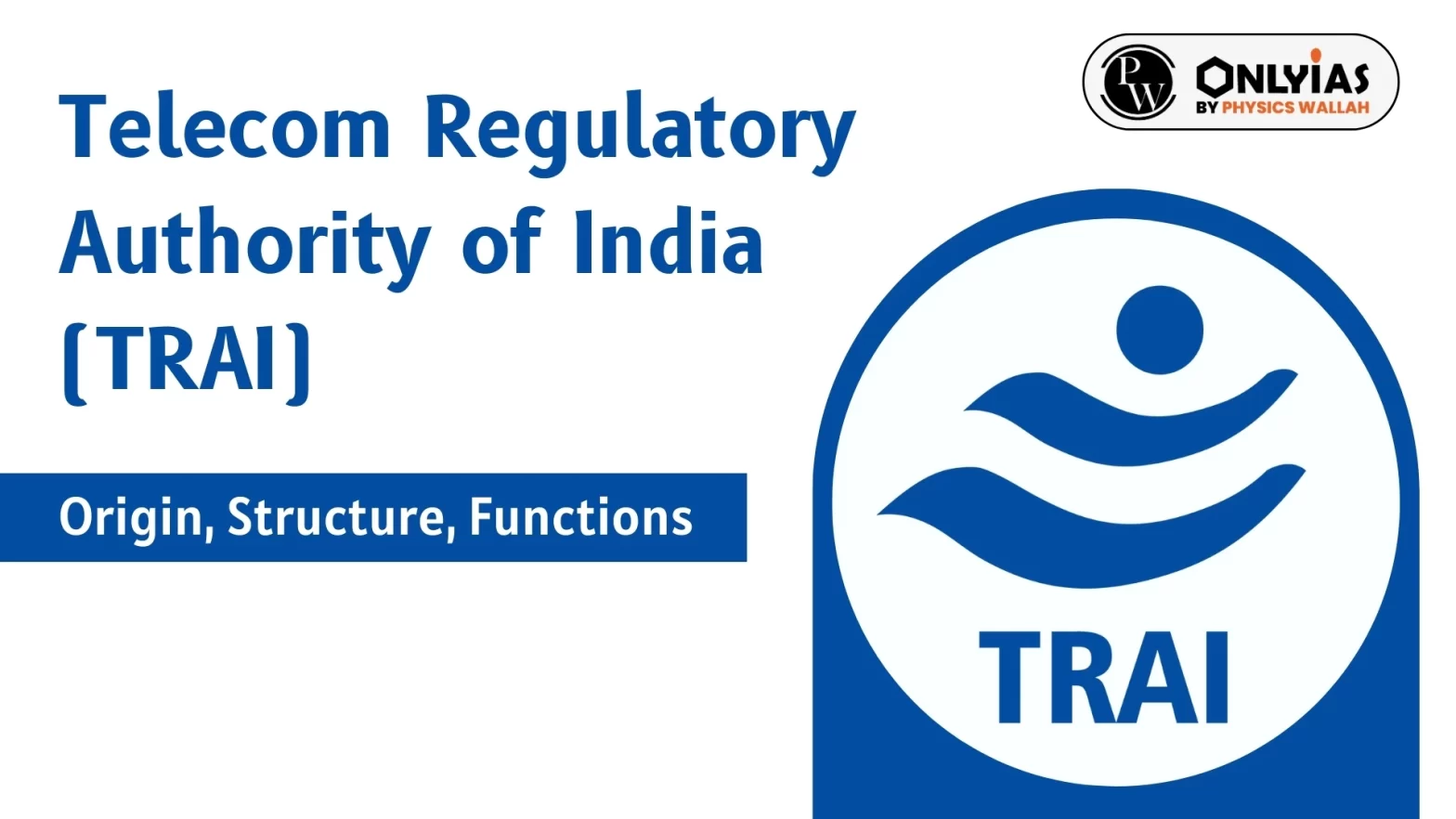The Telecom Regulatory Authority of India or TRAI is a regulatory body set up by the Indian government under section 3 of the Telecom Regulatory Authority of India Act, 1997.

Provision: The Telecom Regulatory Authority of India or TRAI is a regulatory body set up by the Indian government under section 3 of the Telecom Regulatory Authority of India Act, 1997.
The Telecom Regulatory Authority of India or TRAI is an authority that is critical for maintaining order and also ensuring development of the telecom sector in India. Without TRAI, India’s telecom sector could turn into monopolies of the few and hamper consumer interests.
| Must Read | |
| NCERT Notes For UPSC | UPSC Daily Current Affairs |
| UPSC Blogs | UPSC Daily Editorials |
| Daily Current Affairs Quiz | Daily Main Answer Writing |
| UPSC Mains Previous Year Papers | UPSC Test Series 2024 |
Telecom Regulatory Authority of India (TRAI) is a regulatory body set up by the Indian government under section 3 of the Telecom Regulatory Authority of India Act, 1997.
The Telecom Regulatory Authority of India (TRAI) has the main role of regulating the telecommunication sector in India. It seeks to create and nurture conditions for the growth of telecommunications in the country.
TRAI consists of a chairperson and not more than two full-time members and not more than two part-time members.
The Chairperson and other members of TRAI shall hold their office for a term of three years or till the age of 65 years, whichever is earlier.
The Telecom Disputes Settlement Appellate Tribunal (TDSAT) was set up to adjudicate disputes, dispose of appeals, protect the interests of service providers and consumers, and to promote orderly growth of the telecom sector.
Civil courts have no jurisdiction to handle any matter which the TDSAT is empowered to determine. The decisions of TDSAT are considered as the decree of civil court, and the Tribunal exercises all the powers of a civil court.
The Union Government, State Government, any local authority, or any individual can approach the TDSAT for adjudication.

<div class="new-fform">
</div>